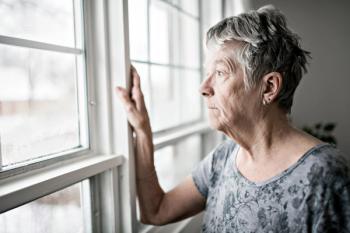
Telehealth Helps Patients With Opioid Use Disorder Stay In Treatment, Study Finds
Patients were more likely to stick with buprenorphine for 90 days, suggesting the value of virtual care. But researchers also found disparities in access.
Researchers have found more evidence that telehealth can help patients struggling with substance use.
In a study funded by the National Institutes of Health, researchers found that patients who received buprenorphine treatment for opioid use disorder with telehealth fared better than those who had similar treatment outside of a telehealth program. The
Nora Volkow, director of the National Institute of Drug Abuse, said telehealth can be an effective tool “to quell the unprecedented loss of life from the overdose crisis.”
“This study suggests that telehealth may increase treatment access and retention, strengthening the evidence that receiving addiction care through telehealth is to be safe and beneficial,” Volkow said in a statement.
Buprenorphine can reduce dependence to opioids. Before the emergence of the COVID-19 pandemic, most patients had to visit a physician in person to get a buprenorphine prescription. Early in the pandemic, the federal government eased restrictions on telehealth, allowing more people access to prescriptions virtually, including buprenorphine.
Researchers examined data from Medicaid recipients in Kentucky and Ohio, and they found that patients were more likely to stick with treatment for at least 90 days if they were involved in telehealth programs.
In Kentucky, 48% of the patients who received buprenorphine via telehealth remained in treatment for 90 days, while 44% outside telehealth settings stayed with it.
In Ohio, 32% of patients who received buprenorphine in a telehealth program remained in treatment for 90 days, compared to 28% of patients who were treated outside of a virtual care program.
Researchers said they didn’t find evidence that patients receiving buprenorphine via telehealth were more likely to suffer an overdose.
However, they said that additional research would be needed in that area, since the study was limited to Medicaid recipients in Kentucky and Ohio.
The study also found disparities in terms of access to buprenorphine through telehealth. Black patients were less likely to receive it virtually than white patients, and Black patients were less likely to stay in treatment for 90 days.
Lindsey Hammerslag, assistant professor at the University of Kentucky and lead author on the study, said in a news release that the study shows the value of telehealth, along with barriers to access.
“Our study suggests that people who have access to telehealth treatment for addiction seem to do better than those who do not. Our hope is that these findings can help inform future policy,” Hammerslag said in a statement. “In addition, the findings also emphasize that the benefits of telehealth are not reaching all populations equitably.”
Researchers with the NIH and the Centers for Disease Control and Prevention have engaged in other studies showing
The new study on telehealth and substance abuse comes less than two weeks after
Federal officials had considered requiring an in-person appointment for a prescription or a refill for certain medications, including those used for substance use disorder, behavioral health issues, and certain pain relievers.
Healthcare organizations and advocates for telehealth are pushing the government for permanent reforms allowing patients to get prescriptions remotely. They say it’s important to preserve access for patients, particularly those who can’t easily visit providers in person.
Newsletter
Get the latest industry news, event updates, and more from Managed healthcare Executive.

















































